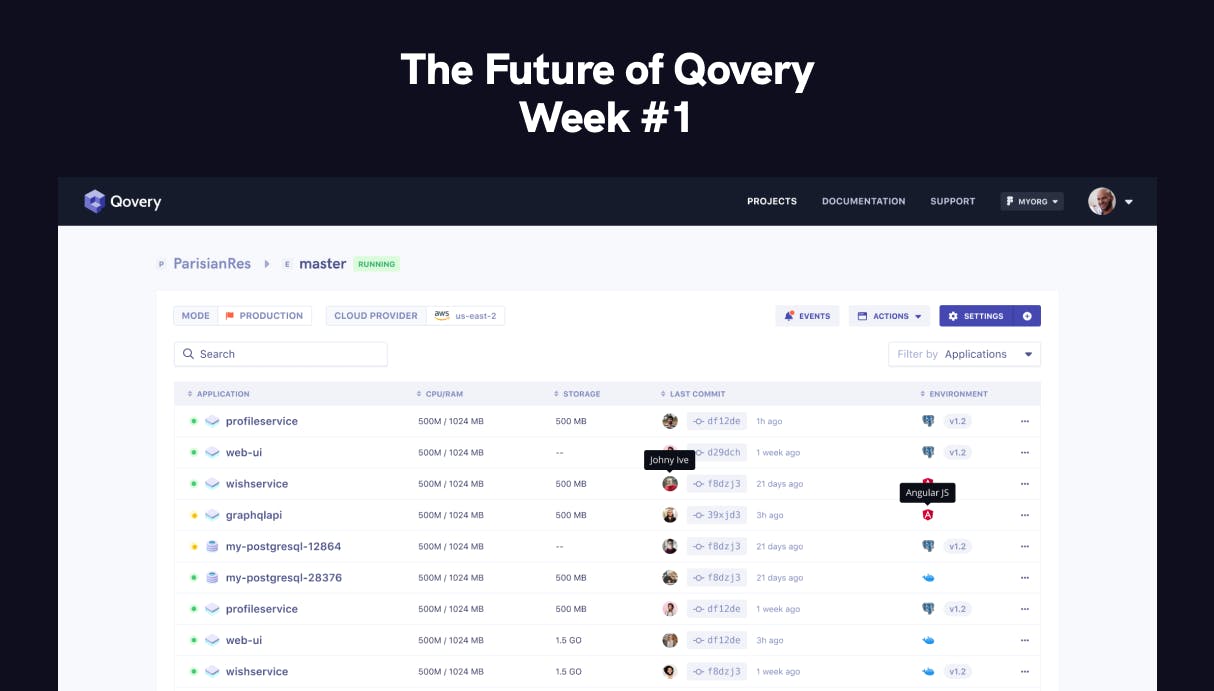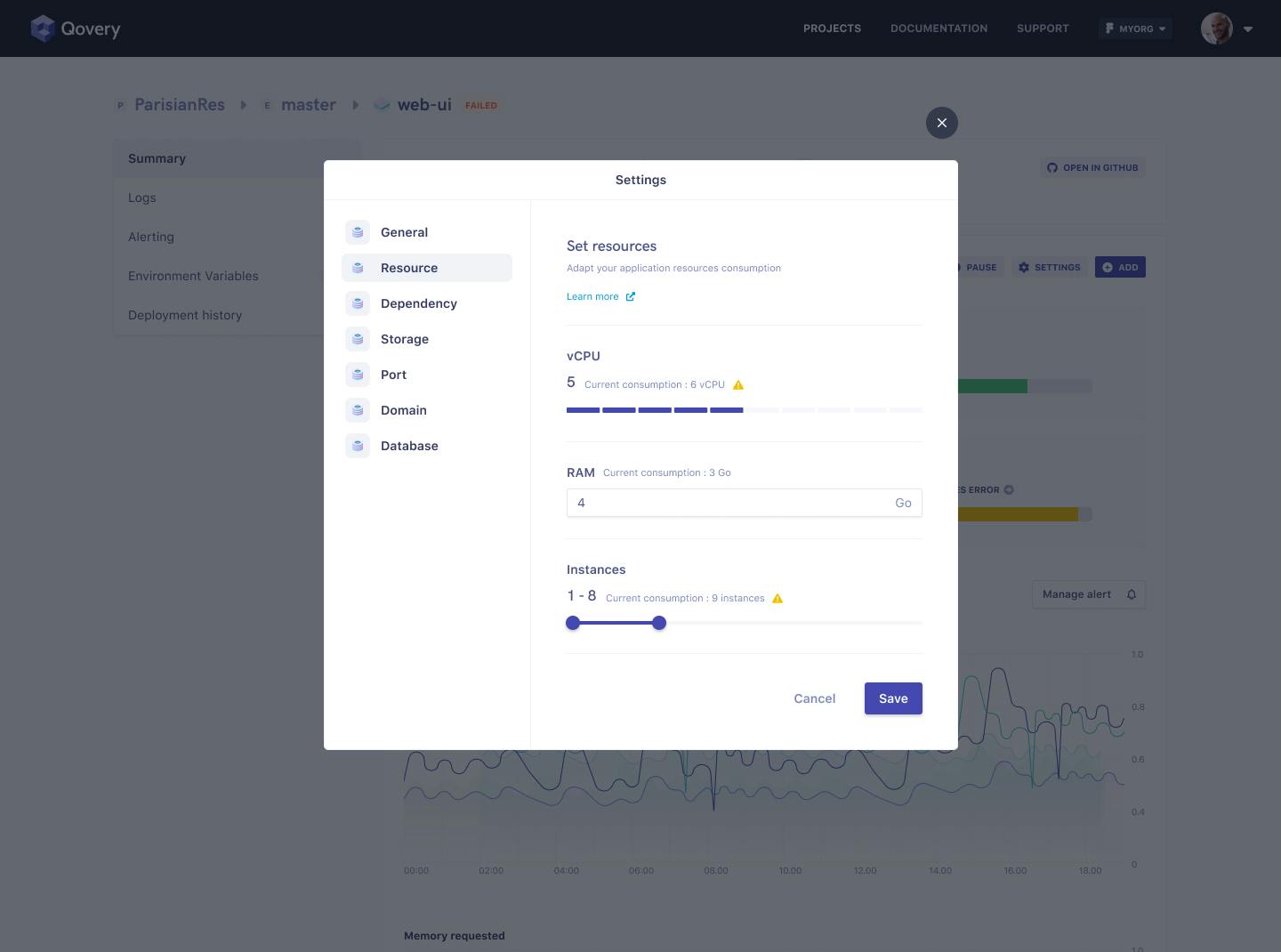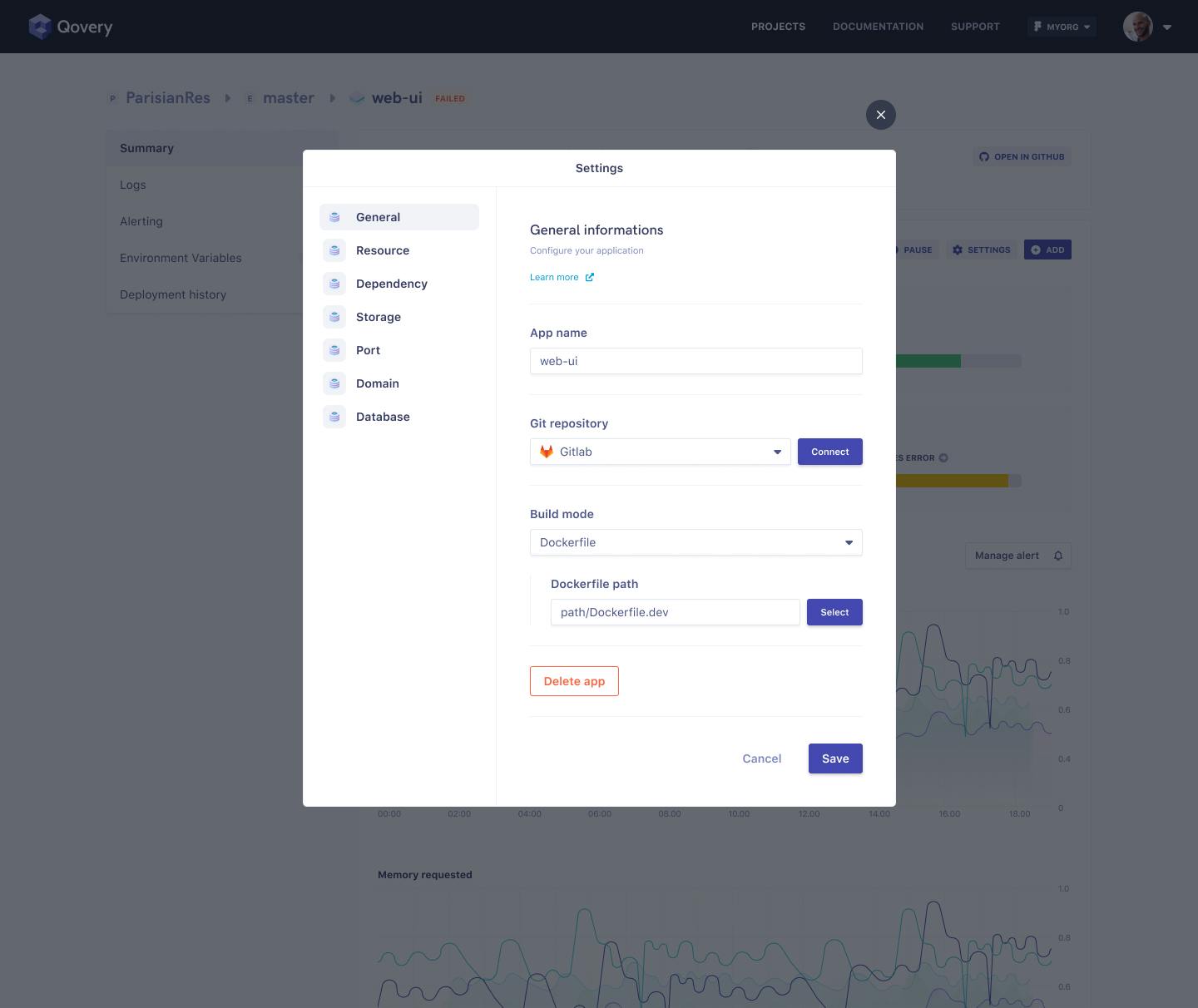The Future of Qovery - Week #1
During the next ten weeks, our team will work to improve the overall experience of Qovery. We gathered all your feedback (thank you to our wonderful community 🙏), and we decided to make significant changes to make Qovery a better place to deploy and manage your apps.

Romaric Philogène
March 6, 2021 · 2 min read
This series will reveal all the changes and features you will get in the next major release of Qovery. Let's go!
#👋 Farewell .qovery.yml
When we released the first version of Qovery in January 2020, we wanted to make app deployment as frictionless as possible for any developer. Meaning, deploying your app is as simple as putting a Dockerfile and files at the root of your project. Configuring your application and its required resources (CPU, memory, database, storage, custom domain) was so simple that thousands of developers are using Qovery today. But the .qovery.yml brought three significant downsides:
#Complexity to configure your application
Since we launched our web console, configuring an application has been difficult. You can't do it from the web console. You have to edit the .qovery.yml from your repository, commit, and push your changes to apply them, which is inconsistent and not the experience we want to offer to our users. Removing the .qovery.yml means that app configuration will be possible via the Qovery web console.

#Multiple apps from the same git repository
Because Qovery relies on the .qovery.yml within a git repository, managing multiple times the same repository as different apps are not possible. Removing the .qovery.yml will make deploying multiple times the same repository possible.
Examples:
- You need to start the same application in a "worker" mode and "API" mode.
- You need to deploy an app for several customers, but each customer needs its app.
#Monorepository support
Last but not least, more than 40% of our users were requesting mono repository support. Removing the .qovery.yml will make mono repository support finally possible.

And I am not mentioning the complexity of keeping the .qovery.yml with our internal state... That's for all those reasons that we decided to get rid of the .qovery.yml file.
In the future, we'll probably support the .qovery.yml for "Infrastructure as Code again", but differently.
Join the community on Discord to give your feedback.
See you next week -- same place :)
Read the following article: The Future of Qovery -- Week #2
Romaric from Qovery -- We are hiring
Your Favorite DevOps Automation Platform
Qovery is a DevOps Automation Platform Helping 200+ Organizations To Ship Faster and Eliminate DevOps Hiring Needs
Try it out now!

Your Favorite DevOps Automation Platform
Qovery is a DevOps Automation Platform Helping 200+ Organizations To Ship Faster and Eliminate DevOps Hiring Needs
Try it out now!